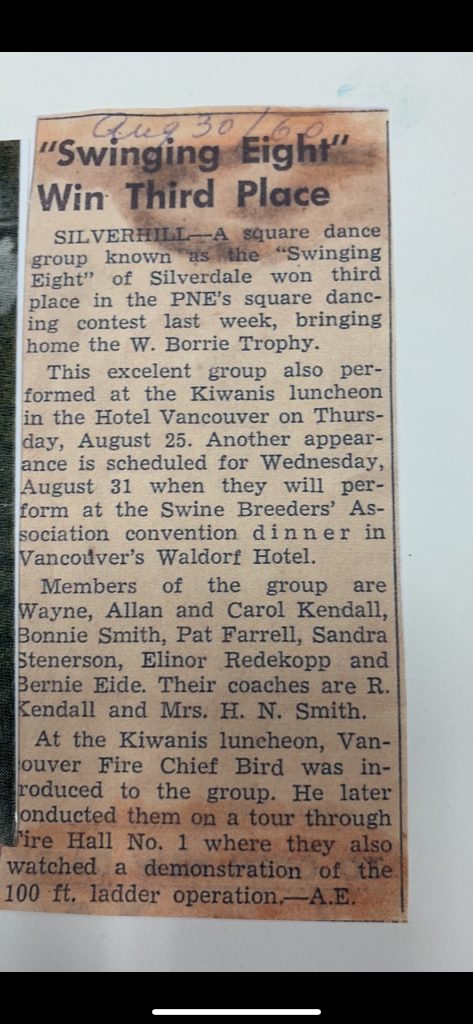Silverhill Hall was home to countless events over its one hundred year life. These ranged from birthdays, Mothers day Teas, celebration fo lives, and many more. The hall charged a modest amount to use its space, which made it accessible to, ideally, people of varying income. Most notable, the 4-H Swine Club of Mission often used the hall got their meeting and events. The hall usually did not charge for such events, understanding the good work that came from such clubs. These clubs were joined by children of all backgrounds and ethnicities, making it a culturally rich experience. Initially, Silverhill did not have its own 4-H Swine Club, due to the fact, that the Mission Fair Board sponsored the club.
The club’s split off into a Mission and a Silverhill branch after approaching Colony farms about the price of their pigs. The idea behind this was that if pigs were all bought at the same age from the same location, they would be judged better at the local fairs. The boys from Mission in the club did not like this idea, so they dropped out for the club; with this, the Silverhill branch was born. At first, this new club had no money to speak of, dances were held at Silverhill Hall to raise funds the music was always donated and the community showed up in big numbers to support the club. It must be noted that without community involvement, this club would have failed. Every year there was a large dinner put on, and the 4-H dignitaries and judges from Vancouver attended. All this food donated as it was the club’s way of saying thank you to the people who had helped them along the way. Of all the skills the 4H Swine Club instilled into children one of the most important ones was that thank you means so much and costs so little.

The 4-H Swine Club was a place where children learn adult skills about raising an animal. Although a lot of hard work took place at these clubs, they also had a lot of fun. Square dancing was a popular past time, and both boys and girls from the clubs took part in it. They had a pretty good group as well, calling themselves the Swinging Eight and placing third a PNE competition in 1960!
The Swine Club, along with learning to raise healthy animals, also seemed to take part in cartoon drawings about events in their club. These drawings give a glimpse into the humour of the boys of the club, not to mention some artistic skills.

This branch of the 4-H Swine club became a very decorated one when in 1967 it received the Royal Bank Trophy for the Highest Achievements. The club was also successful in terms of the teaching of farm and animal raising skills. Some members such as Sandra Stenerson, Dennie Schmidt, Harold Newman, and Ted Lowe continued to raise and sell animals after they had left the club. You could make a few dollars per animal and this was a way that some former members supplemented their income.
The 4-H Swine Club was successful, both in terms of animal raising but also friendship building. Both of these skills are important but you can tell by the artwork completed and the success they had at the PNE that a bond was clearly created, and this is what a 4-H club should strive for.